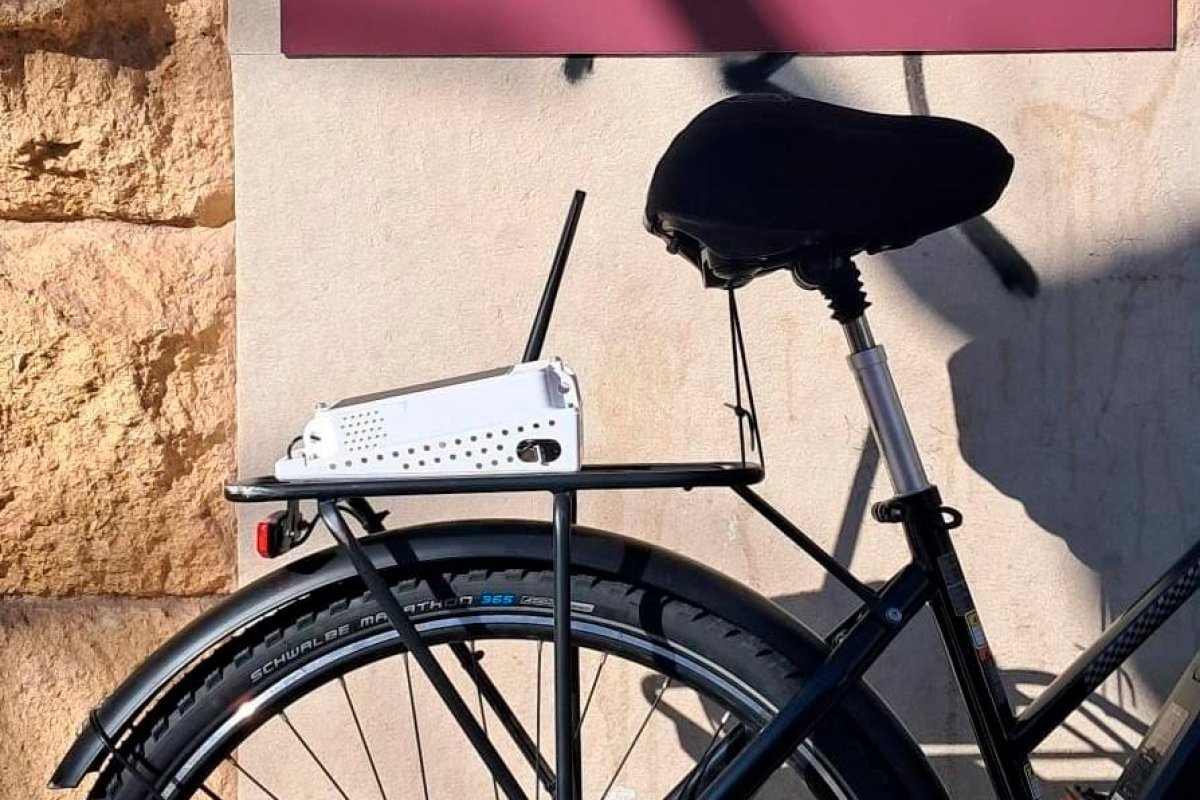When networks are open and the air is clean: IoT and bicycles in Catalonia
In the midst of the boom of artificial intelligence and algorithms that seem to know more about us than we do ourselves, we’ve somewhat lost sight of another buzz from a few years ago: the Internet of Things (IoT), the digital network that allows devices to be connected and communicate to each other, and to us. For the ‘moderately’ (ehem) tech-savvy like myself, this might conjure up images of smart fridges that know when you’re home and suggest a healthy dinner with whatever’s left inside. But IoT can be much more than snack-savvy appliances— improving resource management and distribution, it can be a collective tool to make our cities more liveable and just.
The thing is that new technologies, and this includes infrastructures for IoT networks, are often deployed only where they can turn a profit for the big private companies that develop them – it may sound like a cliché, but think of Amazon and Alexa, or Samsung and the aforementioned domestic appliances. It means that IoT tends to be more present in wealthier communities as the source for a range of new products, such as video intercoms. While cities have been working for a while with a wide range of data for the public interest – air quality, mobility, water use, etc – many still rely on proprietary providers and closed infrastructure, thus preventing technical mutualization and open innovation in the region. What if municipalities and communities could co-develop shared, open infrastructures for the IoT aimed at addressing social and environmental needs?
Shareable technology serving the common good is precisely the vision behind the open and community-based IoT network XOIC (Open Internet of Things Network, in Catalan), an initiative by the Barcelona-headquartered multistakeholder cooperative to promote the commons femProcomuns. The XOIC program aims to create and prescribe a public IoT network (technology agnostic but currently LoRaWAN-based), free of charge for the entire population, that supports a variety of sensor-based devices. The impacts on territorial sustainability are multiple. Using a single infrastructure – network- for multiple uses and actors favours material mutualization and decreases resource use. Sharing knowledge makes the adoption of this technology much more accessible to local small businesses, encouraging technological sovereignty, and fostering locally adapted innovation. As Iker Bilbao from femProcomuns puts it: “We need to root technology in the territory and give small enterprises a real chance to be part of the 21st-century economy.” Some of the applications of XOIC are exemplified through their BICxO device, a solar-powered sensor platform that collects environmental data mounted on moving vehicles such as bikes, trikes, or vans. And here’s where clean air comes in. XOIC has developed several pilots, including one that’s as graphic as it is pedal-powered: bikes circulating in cities like Tarragona and Barcelona equipped with BICxO sensors to monitor air quality in real-time. Another project explores healthier itineraries for cyclists to avoid peak pollution hours and streets, but also to promote citizen science, especially among students. Other areas of application for XOIC – or any other open IoT networks- are water management in rural irrigation communities, supporting climate refugees (particularly relevant in the Mediterranean), quantifying and addressing energy poverty, or CO₂ monitoring in forests (without satellites or sky-high fees).
What’s next? Scaling the adoption of these open technologies—especially by municipalities. Examples like The Things Network in Amsterdam show that another way of doing smart cities is not only possible—it’s already happening. Because sure, a smart fridge might help me eat better—but an open, truly smart city? That might just help us all breathe easier.
Image credit: XOIC

